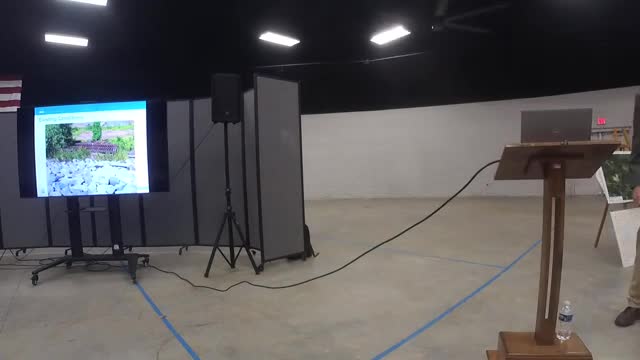Dam breach analysis reveals urgent flood risk concerns
September 30, 2024 | Oktibbeha County, Mississippi
This article was created by AI summarizing key points discussed. AI makes mistakes, so for full details and context, please refer to the video of the full meeting. Please report any errors so we can fix them. Report an error »

In a recent government meeting, officials discussed critical updates regarding the local dam's status and safety measures. The dam currently functions as a dry structure, lacking a permanent pool of water, which is essential for reservoir storage. The auxiliary spillway, originally designed to manage overflow, has not been activated since its construction, indicating that the dam has not faced significant flooding events.
A comprehensive dam breach analysis was presented, revealing potential hazards should the dam fail. The analysis indicated that if the dam were to breach during a heavy rainfall, several nearby homes could experience flooding, with some properties at risk of being submerged by up to two feet of water. This assessment underscores the dam's classification as a high hazard structure, necessitating urgent attention to its safety.
Officials outlined various alternatives for addressing the dam's condition, including a \"do nothing\" option, federal decommissioning, and structural modifications to enhance safety. The decommissioning process would involve removing the dam entirely, which poses logistical challenges, including the disposal of approximately 203,000 cubic yards of material and the reconstruction of affected roadways.
The estimated cost for decommissioning the dam is around $8 million, factoring in expenses for road repairs and environmental restoration. Additionally, two structural alternatives were proposed to elevate the dam's height by two feet to meet safety standards, which would also require significant engineering adjustments.
The meeting concluded with a commitment to make the presentation available to the public, ensuring transparency and community engagement in the decision-making process regarding the dam's future. As discussions continue, the focus remains on safeguarding the community while addressing the engineering challenges posed by the aging infrastructure.
A comprehensive dam breach analysis was presented, revealing potential hazards should the dam fail. The analysis indicated that if the dam were to breach during a heavy rainfall, several nearby homes could experience flooding, with some properties at risk of being submerged by up to two feet of water. This assessment underscores the dam's classification as a high hazard structure, necessitating urgent attention to its safety.
Officials outlined various alternatives for addressing the dam's condition, including a \"do nothing\" option, federal decommissioning, and structural modifications to enhance safety. The decommissioning process would involve removing the dam entirely, which poses logistical challenges, including the disposal of approximately 203,000 cubic yards of material and the reconstruction of affected roadways.
The estimated cost for decommissioning the dam is around $8 million, factoring in expenses for road repairs and environmental restoration. Additionally, two structural alternatives were proposed to elevate the dam's height by two feet to meet safety standards, which would also require significant engineering adjustments.
The meeting concluded with a commitment to make the presentation available to the public, ensuring transparency and community engagement in the decision-making process regarding the dam's future. As discussions continue, the focus remains on safeguarding the community while addressing the engineering challenges posed by the aging infrastructure.
View full meeting
This article is based on a recent meeting—watch the full video and explore the complete transcript for deeper insights into the discussion.
View full meeting
